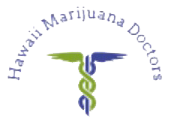Common Benefits of Cannabinoids
Some of the primary benefits of cannabinoids include:
- Pain relief: Many cannabinoids offer an analgesic effect, making marijuana popular for people who suffer from chronic pain. The cannabinoids can be an effective way to control pain, and the pain relief comes with additional benefits, which may also improve a medical condition that causes pain. The pain relief from marijuana can be an option when other types of pain relief don’t work.
- Anti-inflammatory: Inflammation is associated with many modern medical problems, including Crohn’s disease. By reducing inflammation in the body, cannabinoids can provide medicinal effects on those conditions.
- Antibacterial: Many compounds in marijuana offer an antibacterial effect, with some working effectively on infections that are often resistant to antibiotics, such as staph infections. This offers individuals who are dealing with an infection another treatment course. Some cannabinoids also offer anti-fungal properties for additional uses.
- Appetite stimulant: Having the munchies is often a source of jokes when it comes to marijuana, but it serves as a powerful benefit in certain cases. For people who need to gain weight or increase appetite, marijuana can be a helpful tool.
- Sedative: Another group of people who benefit from the effects of some cannabinoids are those who have sleep issues. Some of the compounds in cannabis have a sedative effect that can help you fall asleep. Insomnia can have a major impact on life, so an effective sedative option is a huge benefit for people who have difficulty sleeping.
- Nerve and brain cell protection: Many cannabinoids show the potential for protecting nerves and brain cells. In some cases, cannabinoids may help grow new brain cells.
- Antitumor effects: Certain cannabinoids appear to slow or reduce tumor growth, a huge benefit for people facing a cancer diagnosis. This potential benefit gives cancer patients another potential tool in fighting the tumors. Another positive effect for cancer patients is help with vomiting and nausea often associated with chemotherapy.
- Antispasmodic: Marijuana is often used to treat disorders that cause convulsions or spasms, such as epilepsy. Certain cannabinoids seem to have an antispasmodic effect, which helps reduce or eliminate seizures caused by epilepsy. This can drastically improve the lives of people affected by epilepsy, especially those who have frequent seizures. Using medical marijuana can help those people live a more normal life.
- Antioxidant: Cannabis seems to have an antioxidant effect on the body, thanks to certain cannabinoids. Antioxidants help fight free radicals that can cause damage within the body.
- Reduce intraocular pressure: Glaucoma patients turn to marijuana for the reduction in intraocular pressure caused by some cannabinoids. This can have medicinal benefits for glaucoma.
- Antidepressant: While THC can trigger anxiety or paranoia in some individuals, many other cannabinoids are known for their antidepressant qualities. Marijuana can help improve and balance your mood. For people with depression, cannabinoids may provide help for depression.

Tetrahydrocannabinol (THC)
If you’ve heard of any cannabinoid, it is likely tetrahydrocannabinol (THC). It is the most widely known of the cannabinoids and is typically found in high concentrations in most strains of the plant. THC causes the buzzed high you feel after using marijuana due to its psychoactive properties. It is the main psychoactive compound found in the plant, and marijuana is often cultivated to have higher THC levels.
THC starts in the cannabis plant in its acidic form as THC-A. This compound does not cause a high at all. Once you add heat to the mix, THC-A converts to THC, giving it the power to give you a high. THC has such a pronounced effect on the user due to its strong ability to attach to brain receptors.
Some benefits of THC include:
- Feeling of being high
- A sense of euphoria
- Relaxation
- Pain relief
- Appetite stimulant for individuals who need to improve appetite
- Potential medicinal benefits for Alzheimer’s disease, multiple sclerosis, Parkinson’s disease, PTSD, cancer and Crohn’s disease
- Anti-inflammatory properties
- Amplifies the senses
- Improves sense of well-being
- Promotes creativity
- Prevents nerve damage
- Antispasmodic effects to minimize spasms or convulsions, such as those in epilepsy
- Helps minimize vomiting and nausea, making it useful for cancer patients undergoing chemotherapy
- Antioxidant effect to work against free radicals in the body
- May promote growth of new brain cells and protect brain cells from damage

Potential side effects of THC include:
- Anxiety and paranoia in some people
- Confusion or disorientation
- Dry mouth and eyes
- Short-term memory problems
- Potential long-term alterations to the memory, particularly the verbal memory
- Increased heart rate
- Sense of time slowing – skewed sense of time
- Decreased body temperature
- Tremors
- Tolerance over time that reduces the effectiveness, requiring you to consume more to get the same effects
The side effects of THC often come with a dose that is too high, so lowering the dose can help minimize the effects. Side effects often vary from one person to the next.

Cannabidiol (CBD)
Another common and influential cannabinoid is cannabidiol (CBD). This non-psychoactive compound calms your high, helping to balance the effects of THC. CBD is known for many medicinal benefits and is legal in more states than THC. Some medical marijuana users like the option to treat symptoms with minimized feelings of euphoria or lethargy in strains grown to offer higher CBD levels.
Potential benefits of CBD include:
- Calming your high
- Anti-inflammatory properties
- Neuron protection against injury and degeneration
- Mood improvement
- Pain relief
- Antipsychotic characteristics
- Potential benefits for many medical conditions, including epilepsy, cancer, depression, psychotic disorders, diabetes and anxiety
- Migraine relief
- Decreased appetite
While CBD tends to have fewer side effects than THC, some users do experience some side effects, including:
- Dry sensation in the mouth
- Low blood pressure
- Lightheadedness
- Drowsiness
The drowsiness can be a positive or negative effect depending on your goals. If you want to sleep better, the drowsiness falls under the benefits column. If you want to remain alert, drowsiness becomes a negative effect of CBD.

THIS IS PART OF THE PATIENT EDUCATION AND PLAN THAT I GIVE TO PATIENTS:
Marijuana, also called cannabis, is a drug that’s made of the leaves, flowers, and buds of the cannabis plant. Medical marijuana can help treat symptoms like pain, nausea, and lack of appetite. It may be used by people who have health problems like cancer, AIDS, or multiple sclerosis.
The two most active chemicals in marijuana are THC and CBD. THC affects how you think, act, and feel. It can make you feel very happy or “high.” CBD can help you feel relaxed without the “high.” And it may reduce pain and other symptoms.
There are many types, or strains, of marijuana. Each strain has specific THC-to-CBD ratios. Because of this, some strains have different kinds of effects than others. For example, if a strain of marijuana has a higher ratio of THC to CBD, it’s more likely to affect your judgment, coordination, and decision making. Your doctor may be able to tell you about the different strains you can try for your health problem and the effects they might have.
Is medical marijuana legal?
In the United States, it’s against federal law to possess, sell, give away, or grow marijuana for any purpose. But many states allow people with certain health problems to buy or grow it. And some states allow people to use it for nonmedical (recreational) reasons. Know the laws in your state about use.
What is it used for?
Medical marijuana may help relieve symptoms of some health problems. These may include:
Nausea and vomiting from chemotherapy (chemo) for cancer.
Low appetite and weight loss in people who have AIDS.
Muscle stiffness for multiple sclerosis.
Seizures for some types of epilepsy.
Chronic or nerve pain.
The active chemicals in marijuana—THC and CBD—are used in some medicines to treat nausea, low appetite, and other health problems.
The U.S. Food and Drug Administration (FDA) has approved two medicines that have THC. They are:
Dronabinol (Marinol). This is used to increase appetite in some people who have AIDS. And it’s used to treat nausea in some people who get chemo for cancer.
Nabilone (Cesamet). This is used to treat nausea in some people who get chemo.
The FDA has approved a medicine that has CBD. Epidiolex is an oil extract. It helps reduce seizures in two types of epilepsy—Lennox-Gastaut syndrome and Dravet syndrome.
How is medical marijuana used?
People can smoke medical marijuana as a dried plant or inhale it as a vapor. They can brew it into tea, spray it under the tongue, or apply it to the skin. Or they can eat it in prepared or homemade foods (edibles). And some people can take it as a pill.
How soon will you feel the effects?
How soon and how long you may feel the effects of medical marijuana depends on things like how you took it.
For example, when you smoke marijuana, you can usually feel the effects within seconds after you inhale it. But when you eat it, you may not feel the effects for up to 90 minutes. Since the effects aren’t felt right away, people may think they need more and use too much. To avoid this, start with small amounts until you know how edibles affect you. Or follow your doctor’s instructions on how much to use.
How much marijuana you’ve used and how long you’ve been taking it can also affect how your body responds to it.
You may be affected for hours after you use it.
What are the side effects?
Marijuana may cause a dry mouth, red eyes, and a faster heart rate. It may make you feel dizzy, drowsy, or anxious, or have paranoid thoughts. And it may make you feel sick to your stomach or vomit.
What are the risks?
Marijuana can interact with other medicines. It can be dangerous if you use it with medicines that make you sleepy or control your mood. These include sedatives, anxiety drugs, antidepressants, and opioids. And it can be dangerous to use marijuana with alcohol, tobacco, and illegal drugs.
Marijuana raises your chance of bleeding if you’re on blood thinners. And it can affect your blood pressure. So use caution if you take blood pressure medicine.
Talk to your doctor about other medicines you use before you try marijuana. And talk to your doctor about any personal or family history of substance use disorders or mental health problems. Using marijuana may make these problems worse.
Marijuana may affect your judgment, memory, and concentration. And it may affect your coordination and decision-making. Do not drive or operate machinery after you use marijuana. Talk with your doctor about when it’s safe to drive.
Long-term use of marijuana may increase your risk for severe nausea and vomiting. This is called cannabinoid hyperemesis syndrome, or CHS. People who have CHS may feel very thirsty. They may have belly pain and diarrhea. They may vomit more than 20 times a day. Bouts of vomiting may last more than 24 hours.
Some people who use marijuana may develop cannabis use disorder. This can range from mild to severe. The more signs of this disorder you have, the more severe it may be. When it’s severe, it’s sometimes called addiction. People who have it may find it hard to control their use. And they may keep using marijuana even though it’s having harmful effects on their life.
The risk of this disorder is higher in people who:
Start using marijuana when they’re young.
Use it every day.
Have other substance use disorders and mental health problems.
People who use marijuana often and then quit may have withdrawal symptoms. Symptoms include anxiety, trouble sleeping, and intense cravings for the drug.
If you smoke marijuana, the smoke could damage your lungs. It may make you cough or wheeze. And it may cause lung infections like bronchitis.
If you use medical marijuana and are pregnant (or think you might be) or you are breastfeeding, talk to your doctor. It can affect your baby’s development.
